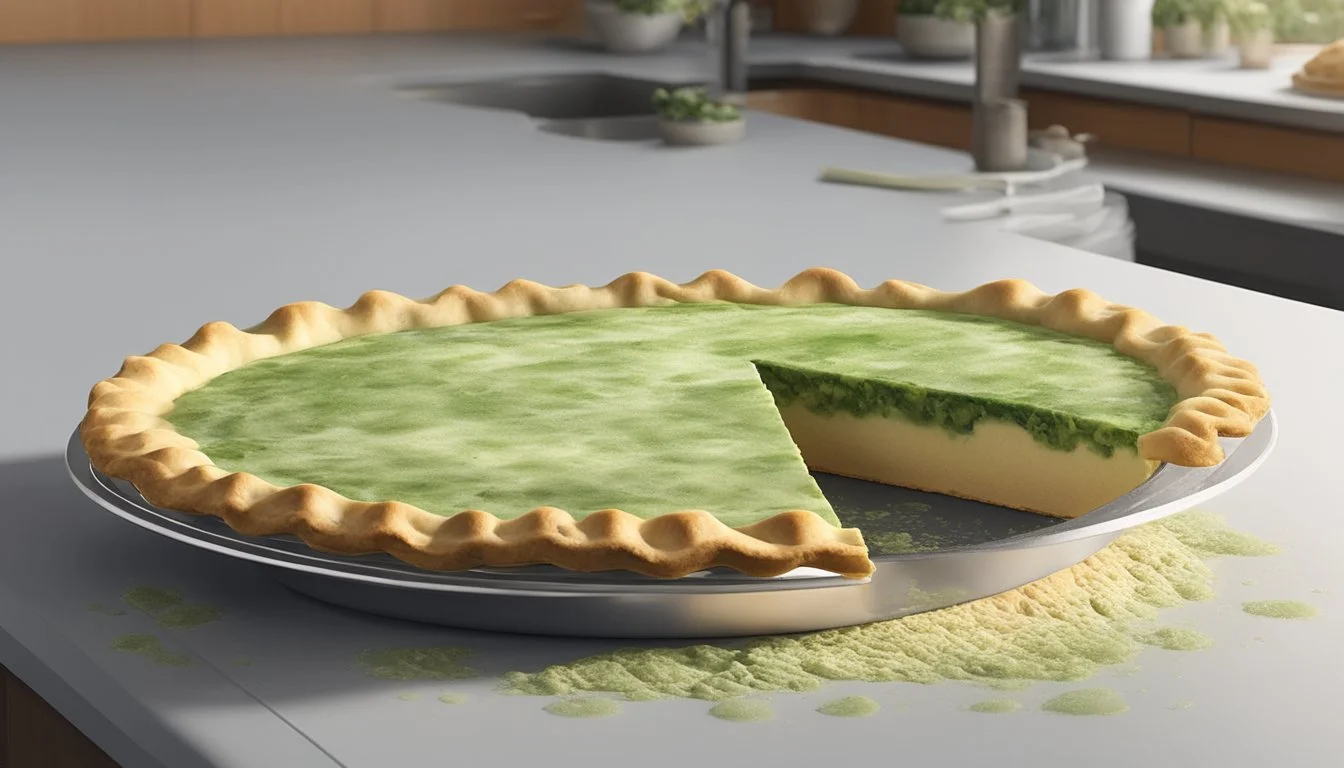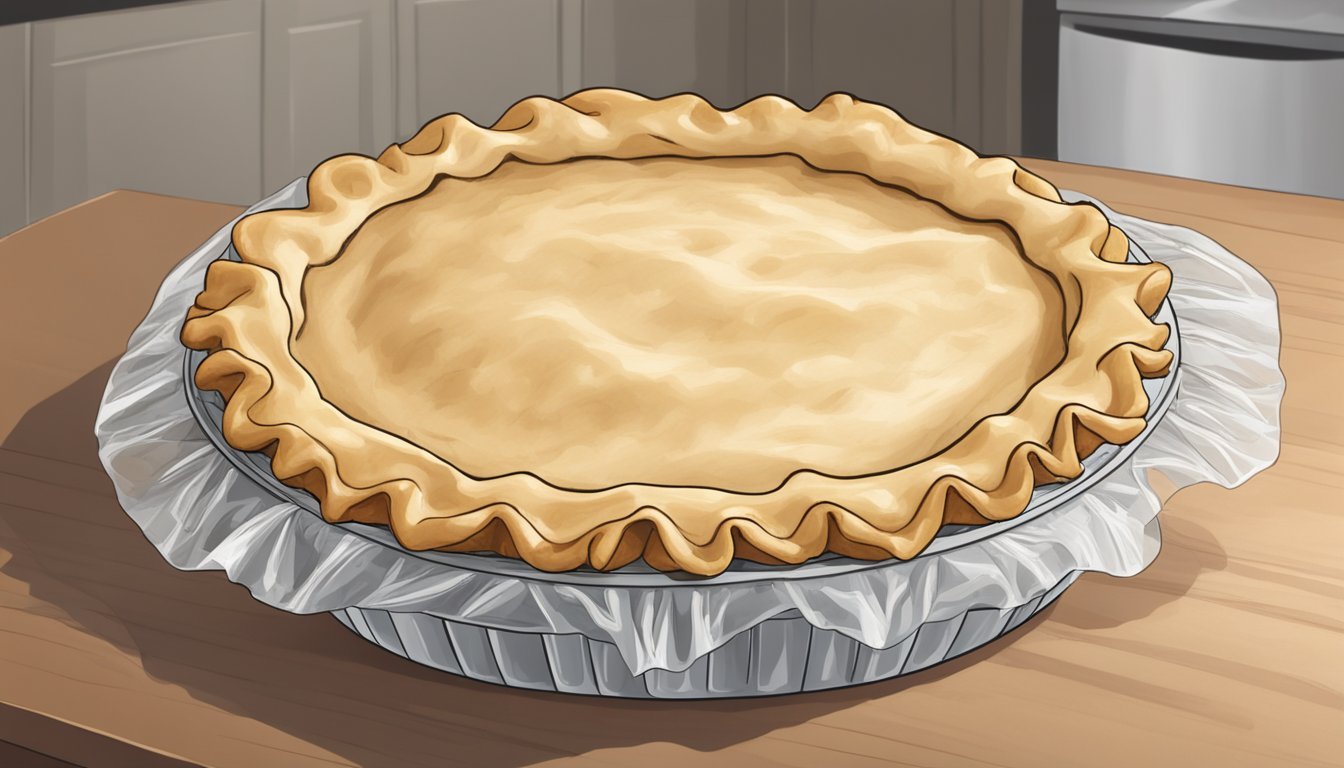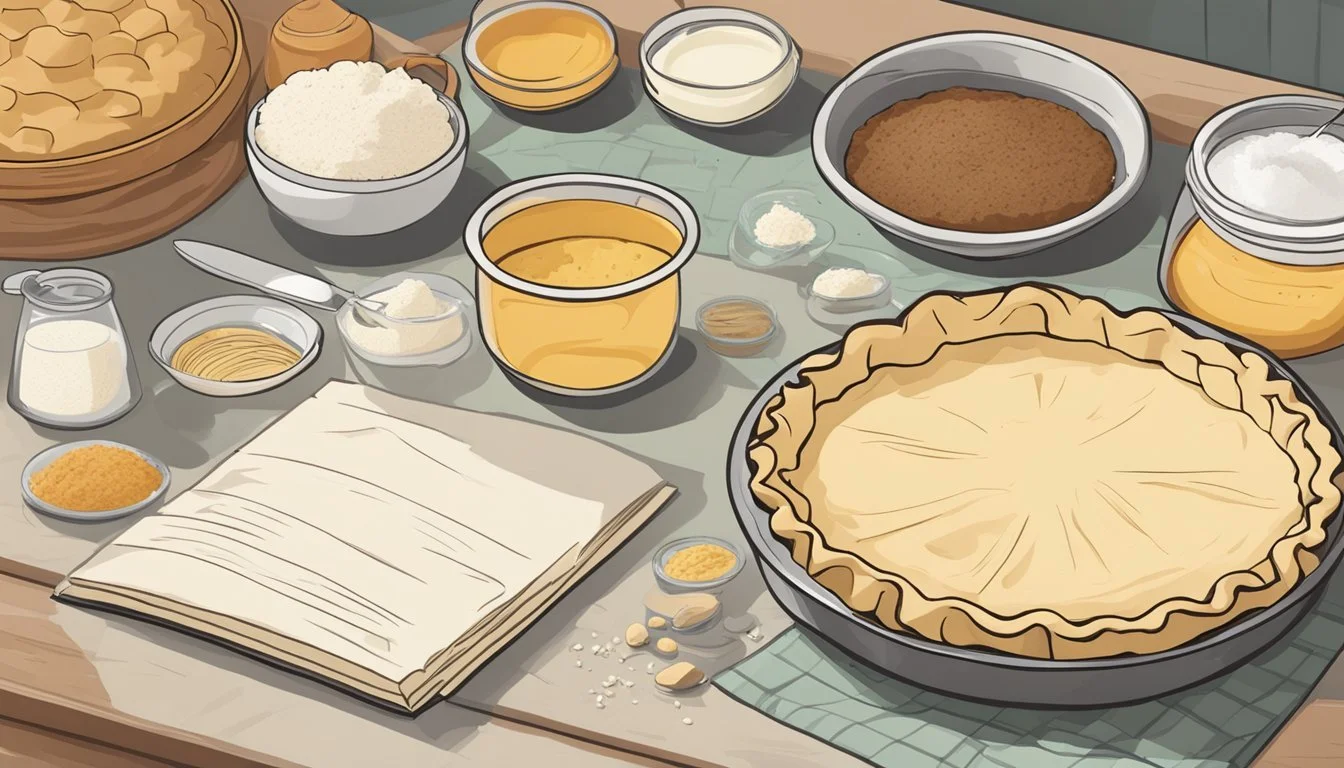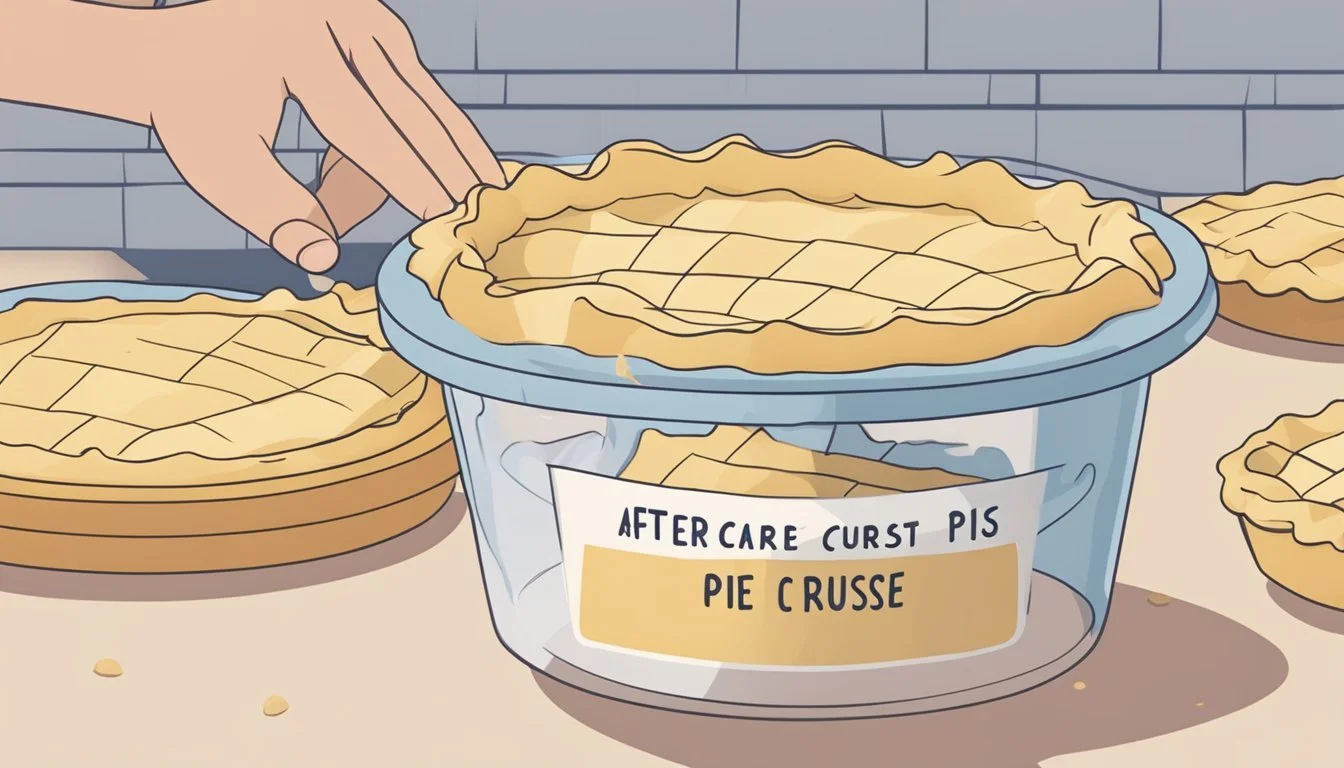Does Pie Crust Go Bad?
Signs and Storage Tips
Pie crust is a beloved component of many desserts and savory dishes, but an often-asked question is whether it can go bad. Yes, pie crust can indeed go bad, especially if not stored properly. Factors such as shelf life, storage conditions, and whether the crust is raw or cooked significantly affect its longevity.
Refrigerated pie crusts generally last up to 2-4 weeks past their expiration date if stored correctly. Proper storage in a refrigerator helps extend its usability. For longer storage, freezing the crust is a viable option, which can preserve it for up to 18 months when kept in its original packaging.
Signs of spoilage in pie crusts include discoloration, mold, and an off smell. Gray coloration or freezer burn can indicate that a raw crust has started to oxidize. If a cooked crust has fuzzy mold or discolored spots, it is undoubtedly bad and should be discarded.
Understanding Pie Crust Shelf Life
Knowing how long pie crust lasts and what impacts its durability is vital for maintaining its quality. Different factors come into play, affecting both homemade and store-bought options.
Determining Freshness
Freshness can be gauged by several indicators. For raw crust or dough, color is a primary sign. Grayish hues or specks indicate oxidation or possible freezer burn. Cooked pie crusts may develop mold or discolored spots if they have gone bad.
Checking the expiration date or best by date is crucial for store-bought crusts. A properly stored refrigerated pie crust can last 2-4 weeks past the expiration date. Homemade versions lack preservatives, so they may have a shorter shelf life.
Factors Affecting Pie Crust Durability
Key factors include air, moisture, and temperature. Exposure to air and moisture can lead to rapid degradation, causing sogginess or mold. Properly sealing the crust in airtight containers can mitigate these effects.
Refrigerated pie crusts need consistent temperatures below 40°F. Fluctuations can cause condensation, which compromises texture and taste.
Freezing is a viable option to extend the shelf life of both homemade and store-bought crusts. For best results, ensure the crust is fully baked before freezing to avoid texture changes. Using quality freezer bags can prevent freezer burn and maintain freshness longer.
Proper Storage Techniques
Proper storage is crucial for maintaining the freshness and quality of pie crust. Depending on how long you plan to store it, different techniques should be used to ensure the best results.
Short-Term Storage
For short-term storage, pie crust should be kept in the refrigerator. Wrap the crust tightly in plastic wrap or aluminum foil. This prevents it from drying out and absorbing unwanted odors from other refrigerator items.
Using an airtight container or an airtight plastic bag can provide an extra layer of protection against moisture and air. Properly stored, a pie crust can remain fresh in the fridge for up to a week.
Key Materials for short-term storage:
Plastic wrap
Aluminum foil
Airtight container
Airtight plastic bag
Long-Term Storage
For longer storage periods, freezing is the best option. Before freezing, wrap the pie crust in plastic wrap or aluminum foil to guard against freezer burn. Place the wrapped crust in an airtight plastic bag or an airtight container to ensure it remains in good condition.
Label the date on the packaging to keep track of storage time. Pie crusts can be kept in the freezer for up to three months without significant loss of quality.
Key Steps for long-term storage:
Wrap in plastic wrap or aluminum foil.
Place in an airtight container or plastic bag.
Label with the date.
Recognizing Signs of Spoilage
When pie crust goes bad, several clear indicators can help determine its unfitness for consumption. Key signs include visual, textural, and olfactory changes.
Visual and Textural Cues
Visual inspections can reveal spoilage through discoloration and mold growth. Fresh pie crusts typically have a consistent color that can vary from pale white to light brown. Any signs of green, black, or fuzzy mold indicate spoilage.
Cracking and shrinking are additional cues. A well-stored crust maintains its shape, whereas a spoiling crust may shrink or develop cracks due to moisture loss. Texture plays a crucial role in identifying spoilage. A fresh crust should feel firm and slightly crumbly. If it feels sticky, slimy, or overly brittle, these textural changes signal deterioration.
Olfactory Indicators
Spoiled pie crusts often emit distinct off smells. A fresh pie crust should have a neutral or mildly buttery scent. If it emits sour, musty, or otherwise unpleasant odors, it’s a strong indicator of spoilage.
Bacterial growth is often accompanied by these off smells. As bacteria decompose organic matter, they produce gas and byproducts responsible for these foul odors. Trusting your nose can be as important as visual checks. If the crust smells unusual, it's best to discard it to avoid potential health risks.
Handling and Preparing Frozen Pie Crust
Properly handling and preparing frozen pie crust ensures the best texture and flavor for your baked goods. Key steps include thawing the crust correctly and preparing it for baking.
Thawing Procedures
Thawing a frozen pie crust is crucial for maintaining its quality. Thawing in the refrigerator is the recommended method. Place the frozen pie crust in the refrigerator for at least 8 hours or overnight. This slow thaw helps retain moisture and prevents the crust from becoming too soft.
Alternatively, thawing at room temperature is quicker but riskier. Leave the crust on the counter for 30 to 60 minutes, but monitor closely to avoid over-thawing, which can lead to a soggy texture. Avoid using the microwave, as it can make the crust tough or unevenly thawed.
Rolling Out and Baking
Once thawed, roll out the pie crust on a lightly floured surface. This prevents sticking and tearing. Ensure the crust is evenly rolled out to the desired thickness, typically about 1/8 inch. For blind baking, where the crust is baked without a filling, preheat the oven to 375°F to 450°F.
Place the rolled-out crust into the pie dish, then line it with parchment paper and fill with pie weights or dried beans. Bake for 10 to 12 minutes until the edges are golden. Remove the weights and parchment, then bake for another 5-7 minutes if a fully baked crust is needed.
For filled pies, add your filling and proceed with baking as per your recipe's instructions. Keeping an eye on the crust's edges is essential; use pie shields or foil to prevent over-browning.
Culinary Considerations
Selecting and preparing pie crusts involves various factors that influence the final taste and texture of the pie. Whether using homemade or store-bought crusts, understanding their characteristics can enhance culinary outcomes.
Enhancing Pie Flavor and Texture
Choosing the right crust type is vital for the desired flavor and texture. Shortbread crusts bring a sweet, buttery profile, perfect for tarts and custards. Graham cracker crusts complement cheesecakes and cream pies with a crumbly texture.
Homemade dough offers a rich, fresh taste often appreciated in fruit pies where the crust plays a significant role in the overall flavor experience. Ensuring freshness is key, as aged or freezer-burned dough can negatively impact both flavor and texture.
Using parchment paper and pie weights during blind baking prevents a soggy bottom and keeps the crust crisp. For a flaky texture, maintaining cold ingredients and proper chilling time is crucial, especially with puff pastry. Proper baking techniques can significantly influence the finished product.
Diversity of Pie Types
Various pies demand specific crusts and textures. Fruit pies often use traditional flaky pie crusts to balance the moist filling. Quiches require more robust, less sweet crusts to support the savory custard filling without overshadowing it.
Tarts typically use shortbread crusts for their buttery and tender crumb, enhancing delicate fillings like custard or fruit. For a different twist, cheesecakes often utilize graham cracker crusts, providing a sweet and crunchy contrast to the creamy filling.
Store-bought crusts offer convenience and consistency, useful for quick preparations. Many varieties are available, from standard pie crusts to specialized options like puff pastry, enabling diverse culinary applications. Each type contributes uniquely to flavor and texture, highlighting the importance of matching the crust to the intended pie.
Health and Safety Concerns
Ensuring the freshness and safety of pie crust is crucial to avoid health risks. Proper storage and understanding the signs of spoilage can prevent foodborne illness.
Preventing Foodborne Illness
Correct storage of pie crust can reduce the risk of foodborne illness. Raw pie crust should be kept in the refrigerator if it contains dairy or eggs.
It must be stored in an airtight container to avoid contamination and spoilage.
Improper storage can lead to bacterial growth, especially if the crust is left at room temperature for too long. Signs of spoilage include changes in color and texture.
Gray coloration or fuzzy mold are common indicators of spoiled pie crust.
Regularly inspect pie crust before use to ensure it is safe.
Understanding Expiration and Use
Pie crust can expire, and using expired pie crust can pose health risks. Expired pie crust may develop mold or become stale, leading to a loss of flavor and texture.
Properly stored pie crust can last in the refrigerator for 2-3 days if homemade, and 2-4 weeks past the expiration date if store-bought.
Check for signs of freezer burn or discoloration to determine if the crust is still usable. Always follow expiration dates and storage guidelines on the packaging to ensure safety.
By being diligent about expiration and proper use, you can minimize the risk of consuming spoiled food.
Recipe Specifics and Adjustments
When preparing pie crusts, adjustments may be necessary depending on the type of filling and crust variety used. Below, detailed guidelines are provided for tailoring crusts to different pie types and selecting the right crust for your recipe.
Adjusting for Different Fillings
Apples pies, pumpkin pies, and other fruit-filled pies may require specific dough preparations. For apple pie, the crust often needs to be thicker to handle the moisture from the fruit and prevent sogginess. Apples release juices during baking, so it's beneficial to blind-bake the crust before adding the filling.
Pumpkin pie filling is dense and requires a slightly different approach. The crust should be pre-baked at a higher temperature to ensure it can support the custard-like mixture without becoming soggy. A common temperature is 375°F, followed by cooling before adding the filling and then baking again.
Pie Crust Varieties
Homemade crust offers flexibility and customization. Bakers can adjust the dough's ingredients to match the pie's filling, whether it's adding more sugar for a sweet pie or more savory elements for a quiche. Homemade options also allow for incorporating high-quality fats like butter, which enhances flavor.
Store-bought, pre-made, and frozen crusts are convenient for quick preparations. They come in a variety of options such as all-butter, vegetable shortening, and gluten-free. These crusts save time and ensure consistency. King Arthur offers highly-regarded options that cater to different dietary needs and preferences.
Reheating pies with pre-made crusts is straightforward. Most crusts can be reheated at 350°F for 10-15 minutes to ensure they regain their flaky texture while keeping the filling intact.
In summary, understanding how to adjust pie crusts based on filling types and choosing the right variety—whether homemade or store-bought—enhances the pie-making process significantly.
Aftercare and Reuse of Pie Crust
Proper aftercare and creative reuse of pie crust can extend its lifespan and add versatility to your kitchen activities. Key actions include efficient storage and innovative ways to repurpose unused dough.
Dealing with Leftovers
It is essential to store leftover pie crust properly to maintain its freshness. Tightly wrapping the leftover crust in plastic wrap or placing it in an airtight container can prevent it from drying out. In the refrigerator, leftovers remain usable for up to 2-3 days.
For better results, mark the date of storage to avoid keeping it beyond the recommended storage time. If the crust has been baked, reheating at 375°F for about 10 minutes can revive its crisp texture.
Avoid leaving opened pie crust uncovered as it can absorb odors from other foods in the fridge, impacting its flavor.
Repurposing Unused Dough
Unused dough from an unopened package or homemade batches can be repurposed into various tasty treats. Unbaked dough can be wrapped and frozen, extending its usability for up to three months.
Small pastry items like mini tarts or hand pies are popular options. Simply roll out the dough, fill with your favorite ingredients, and bake.
Alternatively, use the dough to create savory items like quiches or pot pies. Blind baking the crust until golden can provide a solid base without a soggy bottom.
By being inventive with unused pie dough, you minimize waste and add variety to your meals. Whether making new pastries or savory dishes, the potential of leftover dough is vast.
Packaging and Manufacturing Details
Proper packaging and adherence to manufacturing standards play crucial roles in ensuring the longevity and quality of pie crusts, whether store-bought or homemade. Focusing on the integrity of commercial packaging and the significance of quality marks from recognized brands helps consumers make informed choices.
Commercial Packaging Integrity
The integrity of commercial packaging greatly influences the shelf life of pie crusts. Store-bought pie crusts are usually sealed in air-tight, moisture-proof packaging to prevent drying out, contamination, and odor absorption from other foods. Refrigerated pie crusts, if properly packaged, can last for up to 18 months unopened. Damaged packaging can lead to compromised quality.
Homemade pie crusts should be tightly wrapped in plastic wrap or aluminum foil before storing in the fridge or freezer. Exposure to air and moisture can cause the crust to become soggy or dry out, affecting texture and flavor. Careful inspection of packaging before purchase or usage is essential to ensure quality.
Brands and Quality Marks
When selecting pie crusts, brands like King Arthur are often trusted for their high standards and consistent quality. Quality marks and certifications on packaging indicate adherence to best practices in manufacturing and packaging. Look for seals of approval from food safety authorities or certifications for organic and non-GMO ingredients, especially if the crust includes sugar and dairy.
These quality marks provide consumers with additional assurance of the product's freshness and safety. Furthermore, brand reputation can be a strong indicator of the overall quality and reliability of the pie crust, making it a significant factor in consumer choice.











